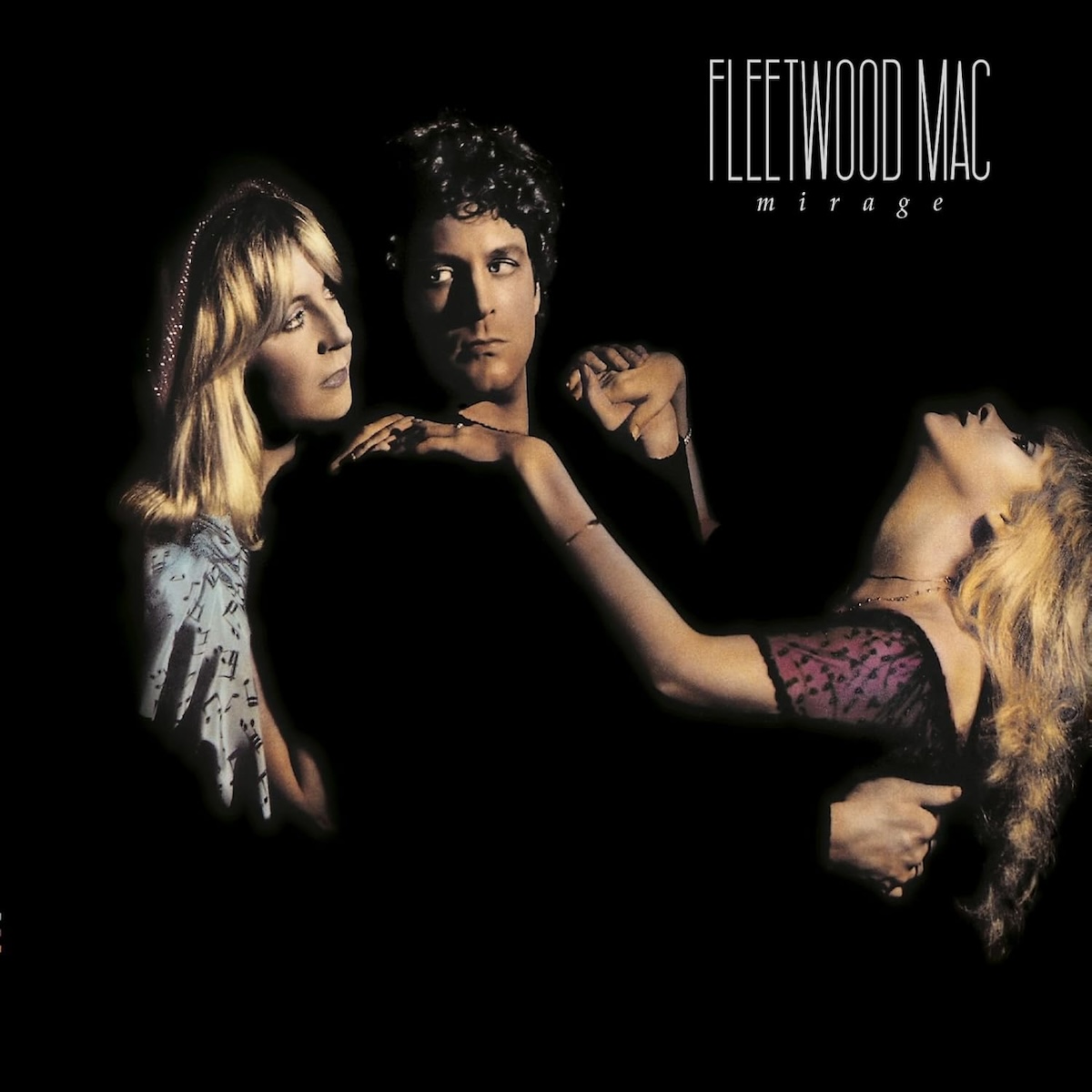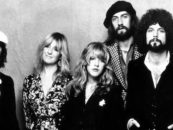 Released in 1982, Fleetwood Mac’s Mirage served as a return to the more polished and accessible sound of their earlier work against the experimental double-album set that was 1979’s Tusk. However forward-thinking the band would be for this album, the influence of guitarist Lindsey Buckingham—who was allowed enormous creative control with regards to Tusk—which proved successful, was not a guaranteed recipe for any harmonious working relationship with his bandmates.
Released in 1982, Fleetwood Mac’s Mirage served as a return to the more polished and accessible sound of their earlier work against the experimental double-album set that was 1979’s Tusk. However forward-thinking the band would be for this album, the influence of guitarist Lindsey Buckingham—who was allowed enormous creative control with regards to Tusk—which proved successful, was not a guaranteed recipe for any harmonious working relationship with his bandmates.
By the time the group—Buckingham, vocalist Stevie Nicks, keyboardist Christine McVie, bassist John McVie and drummer Mick Fleetwood—reconvened after a year’s sabbatical, nothing was assured, except perhaps the obligations to their record label, Warner Bros. After the ’79-’80 Tusk world tour, Buckingham, Nicks and Fleetwood had by then recorded solo offerings, with Nicks going on to achieve blockbuster success with the summer 1981 release of Bella Donna.

John McVie, Christine McVie, Mick Fleetwood, Stevie Nicks and Lindsey Buckingham during the Mirage tour in 1982
Her brewing breakout status, helped by duets with co-producer Tom Petty (“Stop Draggin’ My Heart Around”) and former paramour Don Henley (“Leather and Lace”), and its later #1 chart achievement might signal discourse within the band. However, Ken Caillat and Richard Dashut (who co-produced Rumours and Tusk) came back to the console to help craft what would become Mirage.
The first inkling of contention was placed squarely on locale. Wanting to move the band away from the comforts of Los Angeles, Caillat came up with relocating to Château D’Hérouville in France in the spring of 1981. The residential recording studio was already famous, having been the site for sessions with everyone from Pink Floyd to David Bowie and, most famously, for three Elton John albums including 1972’s Honky Château.
Related: When Fleetwood Mac found fame in the ’70s
As it was, the choice, while lending itself to distance in a show of artistic creation, had the opposite effect for Buckingham and Nicks, who were dissatisfied with the food and downtime with nothing to do. Caillat recalled in an interview with Tape Op in 2013 that, “I’m not sure if Christine hated it. I think Mick and John were just fine. But Lindsey and Stevie were like, ‘I wanna go home. I wanna go home. Waaah.’ So, we stayed as long as we could, and we finally flew home.”
The band finished up work on the 12 tracks at Larrabee Sound and the Record Plant in Los Angeles, ironically with limited additional work from Nicks. In fact, the album, while attempting to put on a more cohesive, united front, became a buzzy mash-up of singular voices that heralded a mature attempt to be nostalgic and familiar without the trauma dump of Rumours or the bizzaro outlier experiment that was Tusk.
“Love in Store,” the opening track (and third single) is a Christine McVie-penned bright piece of pop, carried along by her signature husky contralto and Fleetwood’s slap snare beat. With Buckingham and Nicks on backing vocals and lyrics that lean toward her characteristic mantra of can’t-help-falling-in-love—“You’re the only one I ever felt/Could be special to me/You look at me and I just melt”—they play it safe and sunny for the first new song from the band in three years.
Buckingham’s track, “Can’t Go Back” (and the album’s fifth single), was serviced well from his sparkling guitar work, galloping along at quick pace. The battle for song dominance in the Fleetwood Mac oeuvre was fairly prominent on display, but could be misconstrued at any given moment: Was Buckingham sweetly alluding to his former partner with lines like “She was just a dream maker/Dreamer of sighs/Shadow on the one who used to cry”? In that light, it’s widely known that Buckingham’s demo/instrumental of this song (“Suma’s Walk”) found its way in reworked form as “Wild Heart,” a Nicks tune from her 1983 album The Wild Heart.
Mirage’s third track, “That’s Alright,” is Nicks with a dollop of honky-tonk that goes all the way back to 1972 when its original title was “Designs of Love” and destined for inclusion on the (non)follow-up to the duo’s debut Buckingham Nicks. That version echoes into the future where Nicks, now given a more expansive production palette, is complemented with the musicianship of her bandmates. Perhaps the only disadvantage from a purist’s point of view is hearing the diamond-in-the-rough Nicks on the demo, as yet untarnished by superstar fame.
Buckingham and co-producer Dashut offer up the album’s fourth track, “Book of Love.” Played as an anthemic layered arrangement, in lesser hands it could be seen as the guitarist throwing shade at his former lover—right there in the studio. Yet, well-informed Fleetwood Mac followers can look upon this plea (“Walked out, goodbye/I swore I never would cry/Tore a page of my heart/She wants me to be her friend”) as a no-holds-barred assessment of himself, questioning a higher being who may or may not be messing with his destiny.
Nicks and her iconic contribution (and the album’s second single) “Gypsy” read into all kinds of truth-telling, wrapped in the lore that only someone like Nicks could live. As she has recounted many times over the years, the lyrics reflect a simpler time, when she and Buckingham, as a couple, struggled with finances, sleeping on a mattress on the floor (“To a room with some lace and paper flowers”) to the more heart-wrenching: enduring the loss by leukemia of her confidant and friend Robin Snyder Anderson. Anderson’s pregnancy and birth of son Matthew, followed by her death three days after and Nicks marrying in haste her widowed husband Kim (and divorcing three months later) fuels the poignancy: “And her memory is all that’s left for you now” as she questions if she has done the right thing (“And if I was a child/And the child was enough/Enough for me to love”).
Side one closes with McVie’s “Only Over You,” explicitly dedicated to her ex-boyfriend, Beach Boys drummer Dennis Wilson. Acknowledged as more than an off-the-rails character, Wilson’s unchecked addictions to alcohol and drugs wreaked havoc on their relationship. Yet, you’d never guess that existed as McVie swoops in with a gentle, dreamy delivery behind cascading shimmering synthesizers. If one could term lyrics like “Angel, please don’t go/I miss you when you’re gone” to be construed as an impassioned torch song, it only makes it more tragic that Wilson cheated on McVie (with Nicks!) and died by drowning in 1983.
Buckingham opens side two with “Empire State,” a quasi-apology for framing New York in a less than favorable light by way of the 1973 Bob Welch-era tune “The City.” Sonically benefitting from an upfront bassline courtesy of John McVie and spangled riffs reminiscent of his 1981 solo tune “Trouble,” Buckingham is writing in contradictory couplets—“New York, watch me burn ya down” and “New York, make me part of you”—that feels more like someone who is forced to take sides in a toxic friendship rather than celebrating a refreshing viewpoint.
“Straight Back,” as the title implies, is Nicks lyrically unvarnished, and as was the case with her personal life, it bled into her professional commitments. The backstory: Nicks became involved with producer Jimmy Iovine during their time together on her Bella Donna sessions. His close ties to Tom Petty, who had already shelved “Stop Draggin’ My Heart Around,” was persuaded at Iovine’s suggestion to bring in Nicks to record it as a duo. Iovine had kept his Nicks liaison a secret from Petty, although as the song later went onto massive chart (and MTV) success, that led to a souring between the two. Nicks, for her part, saw her affair with Iovine tank, blaming artistic pressures and Iovine’s mental health decline during recording in the wake of John Lennon’s death in December 1980.
Released ahead of the album as the first single, McVie’s “Hold Me” (co-written by frequent Mac collaborator Robbie Patton) was another drop in the Dennis Wilson bucket of lamented love, held together by McVie and Buckingham’s lovingly blended lead vocals. The accompanying music video—a homage to Belgian surrealist artist René Magritte—helped elevate the undeniable pop vibe, rippling with the repeat Buckingham distinctive acoustic riffs and the earworm title and placing it at #4 on Billboard’s Hot 100, the band’s highest charted single since 1977.
At a curiously short 2:33 and as the album’s fourth single, “Oh Diane” swims in a country twang from Buckingham and wouldn’t be too far placed from a 1950s-era setlist by Buddy Holly. In tandem, “Eyes of the World” continues the Southern character, but with Buckingham getting overly shouty, and not in a good “Go Your Own Way” pronouncement.
The album closes with “Wish You Were Here,” in what may be considered, from this distance, an epic wrap-up/finale, handled with grand taste by McVie. Co-written with music vet Colin Allen (Stone the Crows, Georgie Fame), the song, while not considered particularly memorable, is a standout if only for her vocal clarity and the emotional depth she brings to some fairly straightforward storytelling.
Mirage was released on July 2, 1982, and spent five weeks at #1 on the Billboard 200 and charted at #5 on U.K.’s Official Charts. It was reissued in September 2016, remastered from the original and including 13 live tracks, B-sides, outtakes, plus other songs that did not make the final cut. The studio album and live release are available in the U.S. here and in the U.K. here. Mirage is also part of a 2025 box set, Fleetwood Mac 1975 to 1987, available in the U.S. here and in the U.K. here.
Listen to “Second Hand News” and “Gypsy” from 2024’s Mirage ’82 live album
- Daryl Hall & John Oates’ ‘Voices’: Taking Control - 03/10/2025
- ‘Daytime Revolution’: When John & Yoko Changed American TV—Review - 02/14/2025
- Fleetwood Mac: Mirage—A Return To the Top - 02/08/2025






No Comments so far
Jump into a conversationNo Comments Yet!
You can be the one to start a conversation.